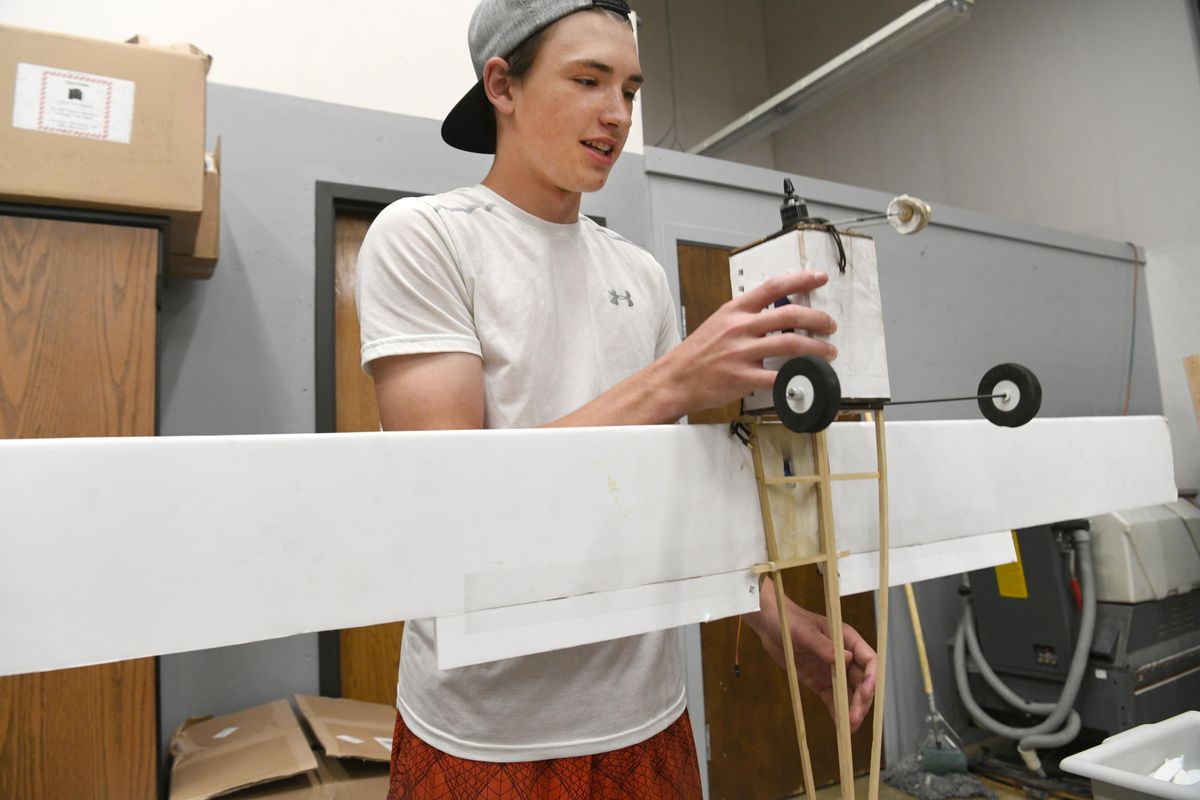Industrial grade 3D printer a game changer: Riverpoint Academy eagerly awaits new machine bought with Hagan grant

Teachers at Riverpoint Academy in the Mead School District are eagerly awaiting the arrival of an industrial grade 3D printing machine paid for by a $23,860 grant from the Hagan Foundation.
The foundation is named after Dr. Cornelius Hagan, a Spokane ear, nose and throat specialist who practiced medicine in Spokane for more than three decades. He established the Hagan Foundation to support educational initiatives in 1997.
The Riverpoint Academy is a project-based STEM school in an old motorcycle showroom at 11008 N. Newport Highway. The school is divided into two large rooms separated by a science lab. Teachers work in teams and meet with students individually and in small groups to discuss ongoing projects.

The school has been given a lot of support from the Hagan Foundation, said inventioneering teacher Gunnar Drew. The foundation has given the school more than $100,000 in grants in the last six years that have been used to pay for specialized equipment.
“None of this is possible without Hagan,” Drew said. “I don’t know if this school would exist without their generosity.”
Much of the school’s existing equipment was purchased with Hagan grants, said inventioneering teacher Jennifer Boyd. “We apply for a Hagan Foundation (grant) every year,” she said.
The school already has a computer numerical control machine and a laser cutter in its maker space. It has four 3D printers, but none of them work. One is waiting for a part to arrive from Italy, two are being used for parts and another works sometimes but is impractical to use, Boyd said.
“Our 3D printers are all consumer grade and it’s just not the quality of our other equipment,” she said. “We do spend a lot of time looking for parts and the kids repair them, but it’s really labor intensive.”
The machines break often despite their best efforts, Drew said. “They’re delicate machines,” he said. “You have to have one to be a maker space, it’s almost in the rule book.”
The software on the new machine will be similar to the software on the old ones, but there will still be a learning curve when the students adjust to the new machine, Drew said.
Students at the school have a lot of freedom to choose their projects, but they have been limited by the balky 3D printers. Students making models were limited to very small models if the machines were working. Last semester a student wanted to make a prosthetic hand, but the school’s machines weren’t up to the task.
“Those are the kind of authentic projects we try to provide for our kids,” Boyd said.
The Stratasys F170 printer on order is known for its reliability and it even has a rapid print button if students don’t need fine details in their model, Boyd said. “There’s no such thing as a rapid consumer 3D print,” she said. “This will be adequate to what we want the kids to do.”
Drew said the new 3D printer could also help breathe new life into the old 3D printers by making replacement parts for them.
The two inventioneering teachers see the potential the 3D printer could bring to all the school’s classes, not just their own, including science and business. It could even be used by the coding class, which is working on designing airplanes and rockets.
“It will be used across the school,” Boyd said.